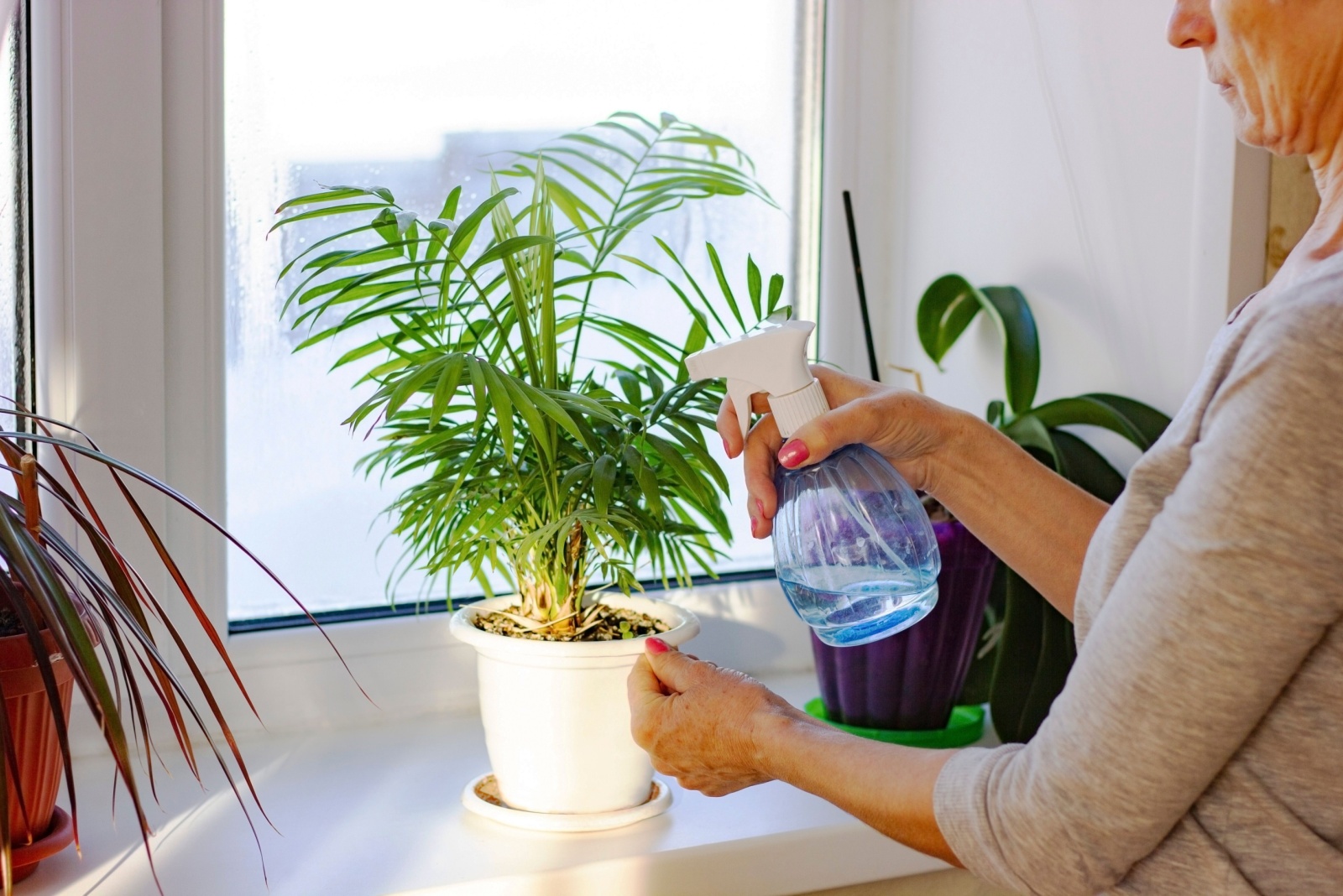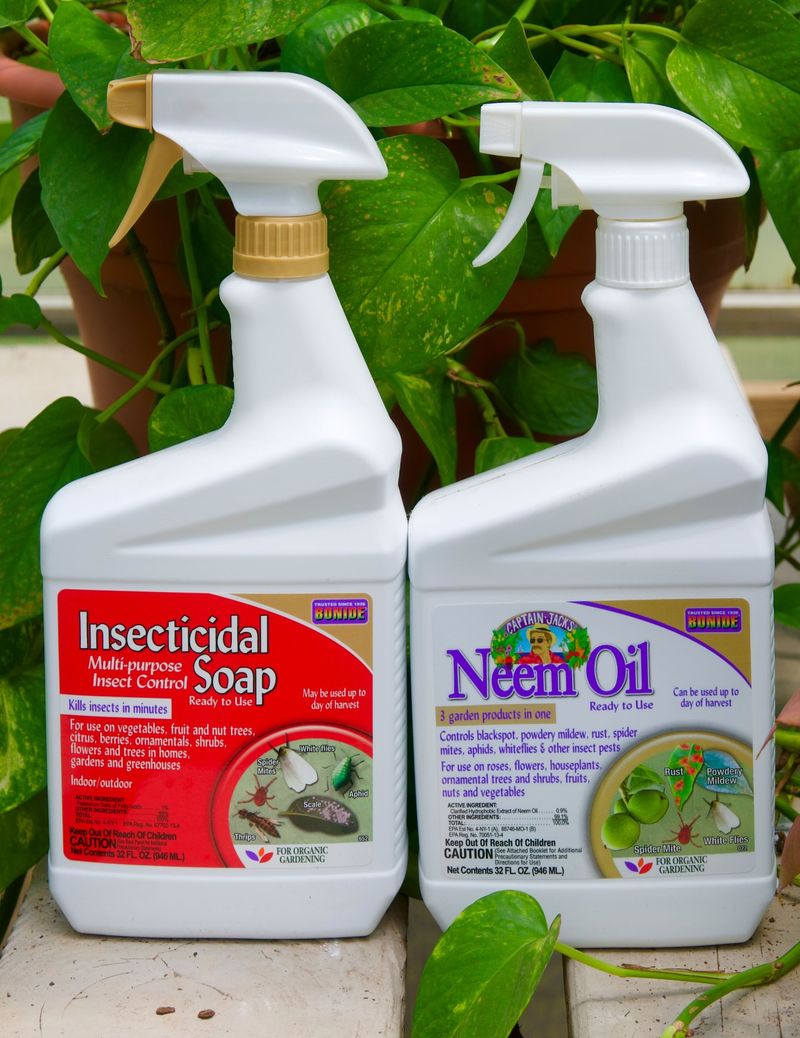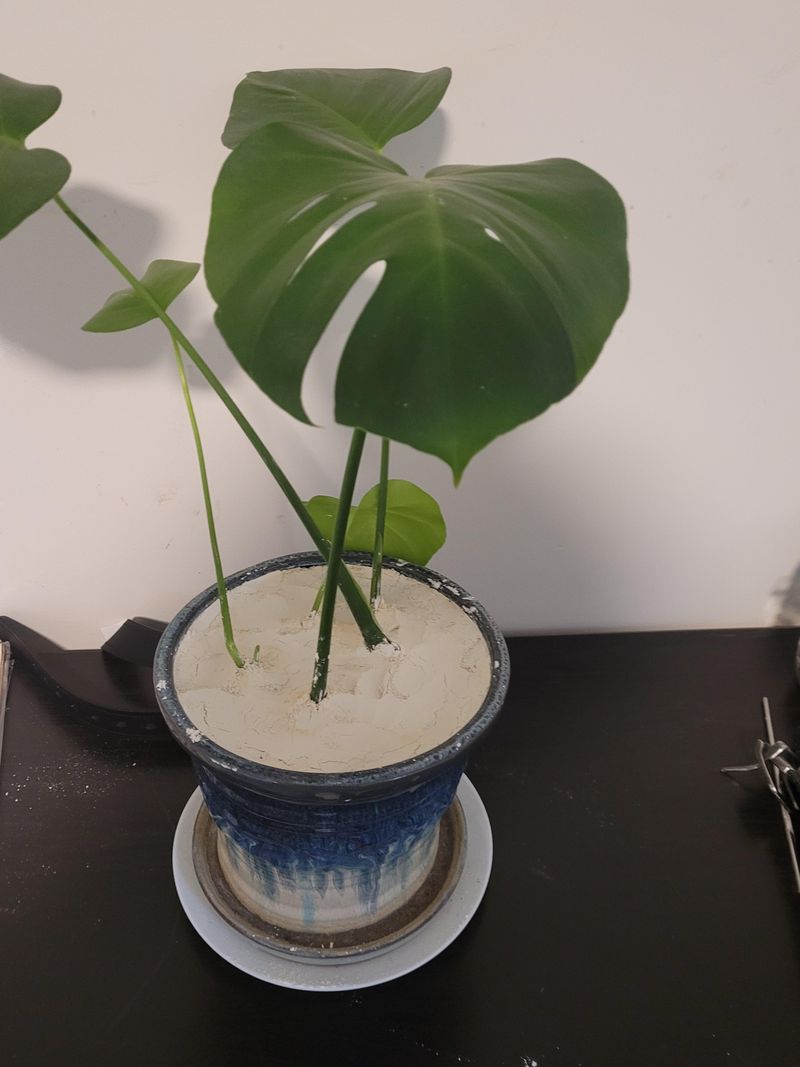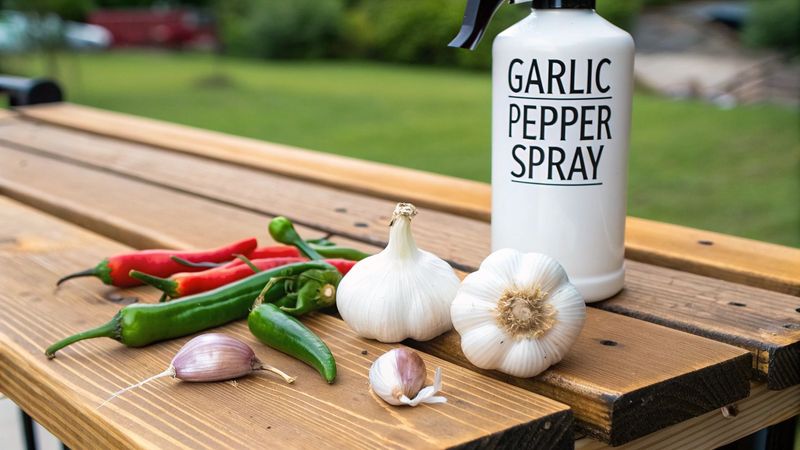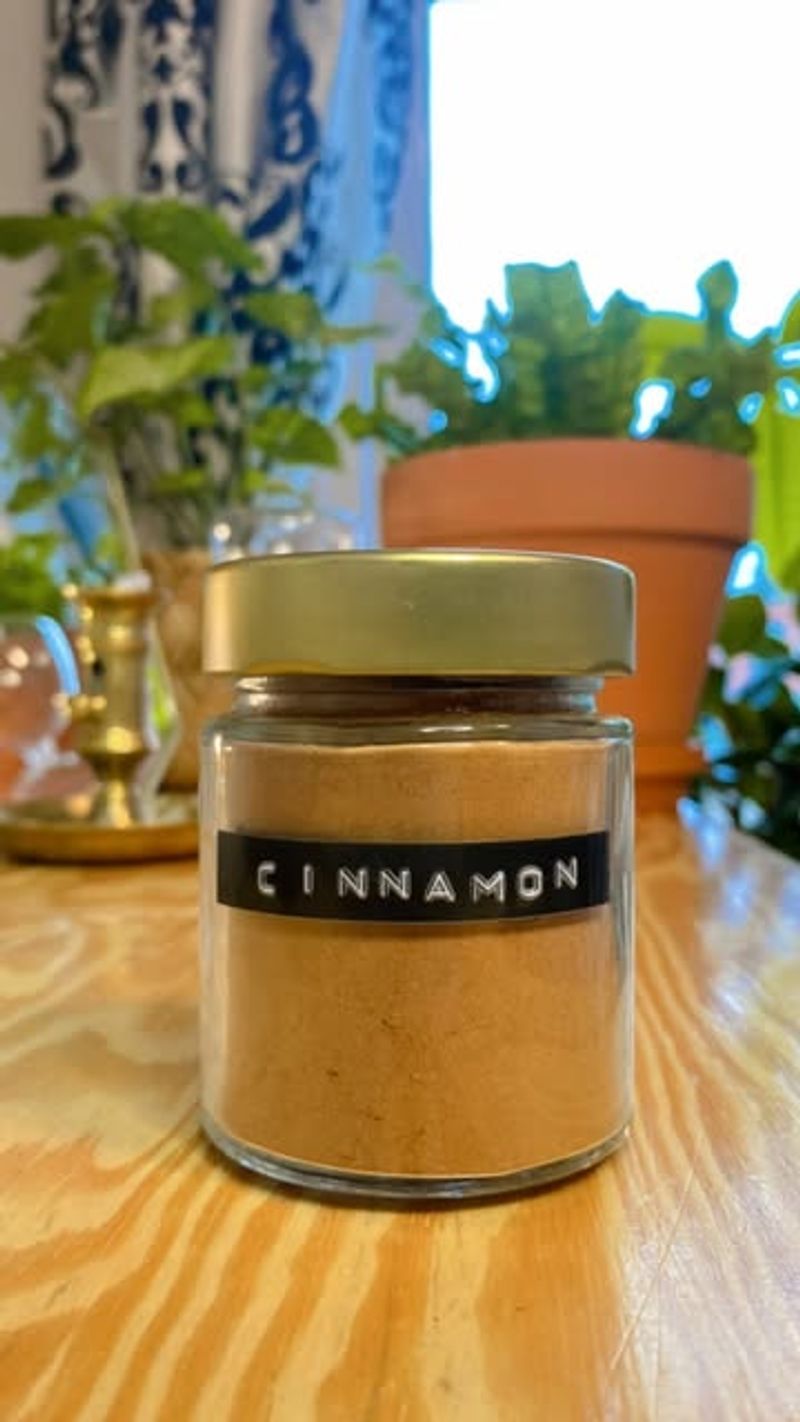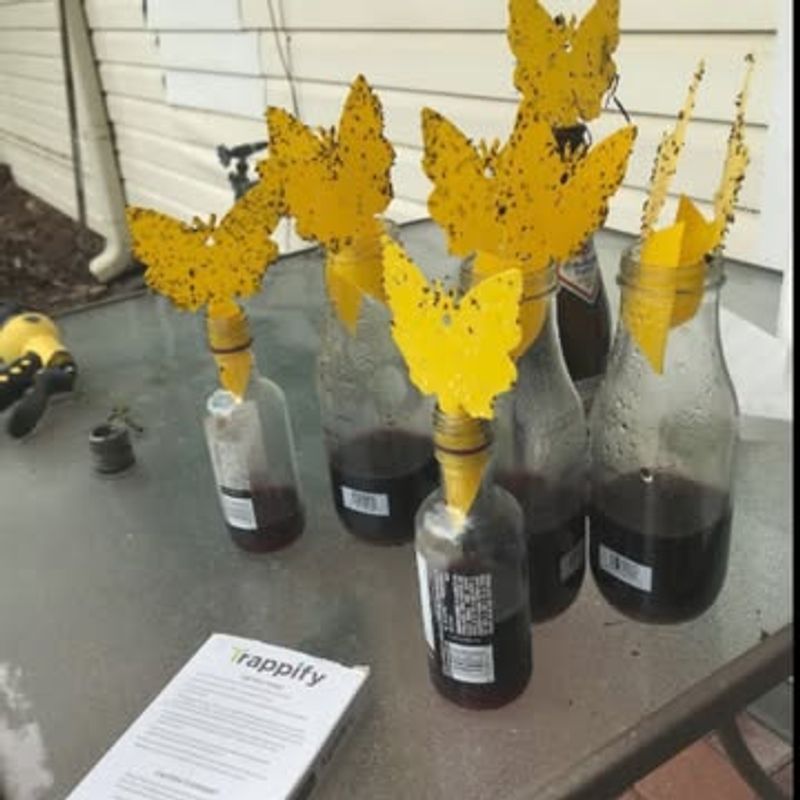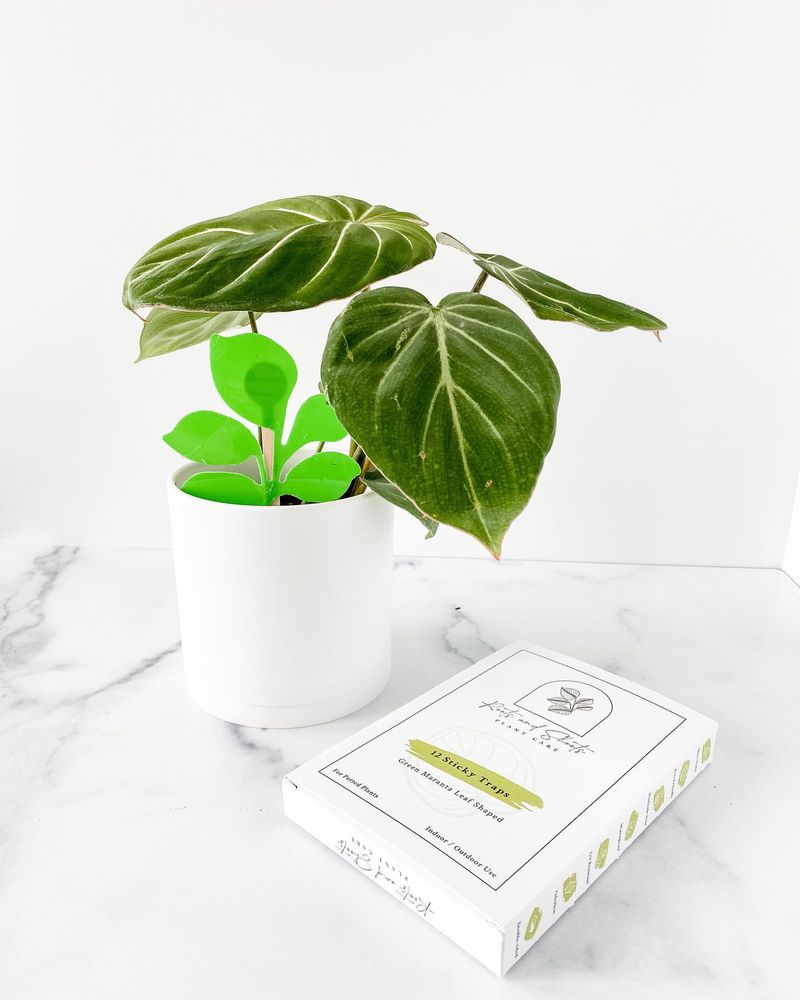Keeping houseplants happy in New Hampshire isn’t always easy—especially during those long, cozy winters. Warm indoor air creates the perfect breeding ground for pests. Suddenly, your favorite plant is crawling with tiny invaders.
Spider mites, fungus gnats, and aphids are common culprits that sneak in and spread fast. They love dry heat and low airflow, making winter their prime season. But you don’t need harsh chemicals to fight back.
These natural methods offer safe, effective ways to protect your indoor garden. From neem oil to sticky traps, you can keep your plants thriving. Best of all, they’re gentle on your home, pets, and peace of mind.
1. Neem Oil Treatments For Persistent Pests
Cold New Hampshire winters mean our houseplants stay indoors longer, giving pests plenty of time to establish colonies. Neem oil works wonders as a natural pesticide that doesn’t harm beneficial insects or leave toxic residues.
I started using neem oil on my spider mite-infested pothos last winter, and within two weeks, the pests were completely gone. Mix 2 teaspoons with a drop of mild soap in a quart of water and spray thoroughly.
Apply every 7-10 days until pests disappear, making sure to coat both sides of leaves. This treatment works against aphids, mealybugs, and scale insects too—perfect for keeping your tropical plants healthy through our harsh winters.
2. Diatomaceous Earth Barriers For Crawling Insects
Tiny fossilized remains might not sound like pest control, but diatomaceous earth creates an effective barrier against many crawling insects that plague New Hampshire homes during winter months.
Sprinkle a thin layer on top of your potting soil to prevent fungus gnats, ants, and other crawling pests from laying eggs or establishing homes in your plants. The microscopic sharp edges damage insect exoskeletons without harming your plants or family.
My collection of succulents stayed completely pest-free through last winter after I started using this powder. Just remember to reapply after watering since moisture reduces its effectiveness.
3. Homemade Garlic And Hot Pepper Spray
Kitchen ingredients make surprisingly effective pest deterrents that cost next to nothing compared to store-bought options. Blend four garlic cloves and two hot peppers with a quart of water, strain, and add a tablespoon of mild soap to help it stick to leaves.
Spray this mixture on affected plants weekly, focusing on leaf undersides where pests often hide. The natural compounds irritate insect respiratory systems while being harmless to plants.
During particularly dry New Hampshire winter months, this spray helps prevent spider mites that thrive in low humidity. Just avoid spraying flowering plants as the solution might affect blooms.
4. Beneficial Insects For Natural Balance
Ladybugs and lacewings act as tiny guardians for your indoor garden, hunting down aphids and other soft-bodied pests with remarkable efficiency. Many New Hampshire garden centers now sell these beneficial insects specifically for indoor use.
Release them in the evening when they’re less likely to fly toward windows. A single release can protect plants for several weeks as they lay eggs that hatch into even hungrier larvae.
After struggling with persistent aphids on my herbs, I introduced ladybugs last February. Within days, the aphid population had noticeably declined, and my basil and mint flourished without chemical interventions.
5. Cinnamon Powder For Fungus Control
Fungal issues plague many New Hampshire plant enthusiasts during humid summer months and in poorly ventilated winter homes. Cinnamon isn’t just for baking—this common spice contains natural antifungal compounds that stop damping-off disease and other fungal problems.
Dust cinnamon powder lightly on soil surfaces of newly potted plants or anywhere you notice mold developing. For persistent issues, make a cinnamon tea by steeping a tablespoon in hot water, cooling, and spraying on affected areas.
When my orchids developed suspicious spots last year, cinnamon powder stopped the spread immediately. This simple kitchen staple has saved countless plants in my collection from fungal doom.
6. Sticky Traps For Flying Pest Monitoring
Yellow sticky traps provide both early warning and active control for flying pests like fungus gnats and whiteflies. These insects are particularly troublesome in New Hampshire when plants come indoors for winter.
Place small yellow sticky cards just above soil level where fungus gnats tend to hover. The bright color attracts flying pests, and the adhesive surface traps them before they can reproduce or spread to other plants.
Checking traps weekly helps monitor infestation levels—I discovered a developing whitefly problem on my hibiscus this way before the plants showed damage. Cut cards into smaller pieces to make them less conspicuous among your decorative plants.
7. Proper Quarantine Procedures For New Plants
Prevention beats treatment every time when dealing with houseplant pests in our New Hampshire climate. New plants often bring hitchhiking pests that can quickly spread to your established collection.
Keep all new plants isolated for at least three weeks before introducing them to your main growing areas. During this time, inspect thoroughly for signs of pests—speckling, webbing, sticky residue, or actual insects.
This habit saved my collection countless times, especially after plant swaps became popular in Manchester last summer. A seemingly healthy pothos harbored spider mites that became visible only after a week in quarantine, allowing me to treat it before it affected other plants.

